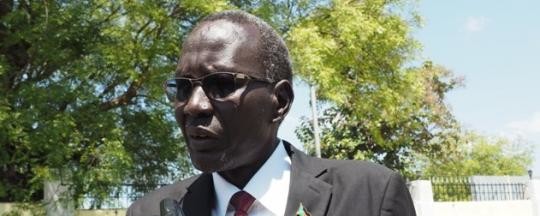South Sudan’s government is earning only about $10 per barrel of crude oil compared to an international oil price of more than $50. Sources explained that this is because of the quality of the oil, government debts to oil companies, pipeline fees, producer’s share and other fees.
Oil from South Sudan’s Upper Nile fields, known as ‘Dar Blend’, is considered lower quality than the international benchmark variety, known as North Sea Brent crude, which sells at about $10 more per barrel. This accounts for part of the difference between the international benchmark price and South Sudan’s earnings.
Another factor is that South Sudan has borrowed hundreds of millions of dollars from oil companies in the form of advance payments for sales of crude oil. These debts are repaid to the companies in the form of deductions from government oil sales.
South Sudan also pays a fixed fee per barrel to neighboring Sudan for use of an oil pipeline that runs north to the Red Sea. This fee has remained at the same level in spite of falling oil prices internationally. Currently these transit fees average to $9.10 per barrel, according to the terms of a 2012 agreement that ended a post-secession oil shutdown.
Additionally, South Sudan pays to Sudan another fixed fee of $15 per barrel under the terms of the Transitional Financial Arrangement, another provision of the 2012 agreement. South Sudan must continue to pay this fee until it pays off a total obligation of $3 billion.
Although the South Sudanese government ceased regularly disclosing its oil revenues since the civil war started in December 2013, a senior official at the petroleum ministry told Radio Tamazuj this week that the government currently earns about $9 per barrel after paying Sudan and the oil companies.
A finance ministry source speaking to Radio Tamazuj in mid-March cited a similar figure. He estimated earnings of about $12 per barrel compared to a world oil price of $54 per barrel at the time.
This estimate tracks closely with a report by the Financial Times last December, which reported a $36-$41 difference between the Brent crude benchmark and South Sudan’s earnings per barrel.
The $9 figure is also close to a projection made by the World Bank, which estimated in January that South Sudan would earn $9 per barrel if global oil prices dropped to $50/bbl. Currently, Brent crude is about $57/bbl but the average for the first two months of 2015 was only $53, according to data from the US Energy Information Administration.
According to an unpublished document obtained by Radio Tamazuj, World Bank staff calculated three scenarios corresponding to average international Brent prices for the first half of 2015 of $70, $60, and $50, respectively. Under the latter scenario, government revenue dropped to $9 per barrel. The World Bank calculated this price as follows:
South Sudan’s earnings when global oil prices are $50/bbl
Brent Crude Price: $50 / barrel
Dar Blend discount: -$10 / barrel
Dar Blend price: $40 / barrel
Cost Recovery and Fees: -$30 / barrel
Net Oil Revenue: $10 / barrel
Transfer to States/Communities: -$0.5 / barrel
Net Oil revenue ‘disposable’: $9 / barrel
% change compared to baseline: -80%
This calculation includes subtraction of transit fees, cost recovery, mandatory transfers of 2-3% to the oil-producing states and communities, and payments of 50-60% to the oil-producing companies for their share.
“Net disposable oil revenue drops to $9/barrel in the low-end scenario,” reads the World Bank document.
Impact analysis
South Sudan’s fiscal year budget 2014/2015 was prepared under the assumption that the average annual Brent crude price throughout the year would be $101 per barrel. The price instead averaged 12% less than that during the first half of the fiscal year (July to December 2014) and dropped to almost half as much in 2015.
Meanwhile, South Sudan’s oil output levels have also been lower than the budget output estimates. Taking into account these production drops, the World Bank document obtained by Radio Tamazuj estimates a 46% drop in total government revenue for the the low-end scenario.
In this scenario, the total government revenue for the fiscal year is 6.3 billion SSP compared to the budget plan for revenues of 11.7 billion SSP. Even if the government keeps its spending within the budget of 11.28 billion SSP, it will still face a fiscal deficit for the year reaching up to 5 billion SSP.
The fiscal deficit would still remain dire even if the international oil price average improves to $60 per barrel. Under this scenario, total government revenue would still be 42% less than the budgeted revenue, a deficit of 4.5 billion SSP.
This means that the government needs between $1.5 billion and $1.7 billion to meet its budget deficit this year as long as the benchmark average remains between $50 and $60 per barrel, according to the projections.
The government’s options include printing this money or borrowing it.
File photo: Petroleum Minister Stephen Dhieu Dau
This report is part of an exclusive series, ‘War Economy‘, which focuses on the effects of civil war on the economic situation in South Sudan.




